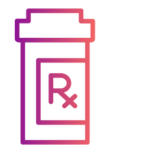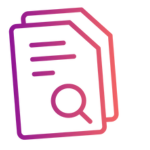Medicare plans change benefits and costs each year, and new plans may become available. During open enrollment, you can decide if your current plan works best for the coming year, or if you want to change plans.
How open enrollment works
Medicare open enrollment for prescription drug coverage (Medicare Part D) is from October 15 to December 7 each year, for coverage that will begin on January 1 the following year.
Enroll the sooner the better to avoid delays in getting the prescriptions you need.
You can enroll in a new plan in any of these ways:
- Contact the plan you want to enroll in directly
- Call 1-800-MEDICARE (TTY: 1-877-486-2048)
- Visit Medicare.gov: review your plan options and/or log in to make changes
There is no fee for changing to a new plan. After enrolling in the new plan for 2026, you will be automatically unenrolled from your 2025 plan at the end of the calendar year. You do not need to notify your 2025 plan of the change.
If you have questions about your coverage, visit Medicare.gov or call 1-800-MEDICARE; (1-800-633-4227/TTY: 1-877-486-2048). You can visit the Medicare.gov plan finder website to explore your coverage options.

Changes you can make during open enrollment
Between October 15 and December 7, you can:
- Switch from Medicare Advantage to Original Medicare or vice versa
- Switch from one Medicare Advantage plan to another
- Switch from one Prescription Drug Plan (PDP) to another
- Join a Prescription Drug Plan (late enrollment penalty might apply)
- Drop your Part D coverage altogether (Note: re-enrolling in a later year will include a late enrollment penalty if you’re not maintaining other creditable drug coverage)
Medicare Advantage open enrollment
People with Medicare Advantage plans can also switch plans during the Medicare Advantage open enrollment period from January 1 to March 31, 2025. During this period, you can:
- Switch from your Medicare Advantage plan (with or without drug coverage) to Original Medicare, or
- Switch from your Medicare Advantage plan (with or without drug coverage) to another Medicare Advantage plan (with or without drug coverage),
- But you must also join a separate stand-alone drug plan if you want prescription drug coverage.
If you want to keep your current plan
If you want to keep your current plan, you don’t need to do anything. You will stay enrolled in your current plan unless you sign up for a new plan.

Should I change my Part D plan?
Start by reviewing the 2026 coverage changes in your current plan
You should get a letter from your current plan called an “Annual Notice of Change/Evidence of Coverage” by the start of the open enrollment period. If you did not receive this letter, call your plan immediately.
The letter explains some of the important changes to your plan, including changes to the name of the plan, to the premium, drugs covered by the plan (called a “formulary”), the cost of the drugs, and any restrictions that limit the access to drugs.
It is very important to read this letter as these changes can impact the cost of your drugs.
The letter is important, but it might not include all the details you need to figure out how changes in your plan will affect the medications you use. Below, we give you advice about comparing plans and asking important questions to make sure you choose the best plan for your needs in the coming year.
A list of covered drugs (the plan’s formulary) may be included in the Annual Notice of Changes/Evidence of Coverage letter. If you didn’t receive a copy of the formulary, call the plan directly. They can send you a copy, or you can ask them to tell you if your prescription drugs are covered and if there are any changes. The phone number for the plan’s customer service department is listed in the letter you received.
Learn more to make an informed decision:
Get detailed information about your plan’s formulary and how your medications will be impacted by:
- Visiting the plan’s website
- Calling your plan directly
- Using the Medicare.gov health and drug plan finder
- or by calling 1-800-MEDICARE (TTY: 1-877-486-2048)

Comparing Part D plans
How does your current plan compare to other plans?
It’s important to compare your plan with other plans in your area. Your health and prescription needs may change over time, and Medicare Part D drug coverage plans change each year. Other plans may provide you with better or less costly coverage for the drugs you need.
Often the single most important factor in choosing a plan is comparing the drugs you take to the plan’s formulary to see if a plan covers the drug you need.
The best way to compare your current plan with other plans is to use the Medicare Plan Finder at Medicare.gov. This tool will allow you to complete either a personalized or general search for drug coverage and estimate costs for plans in your area in 2026. Estimates are based on drug prices on the date you compare plans, but your actual out-of-pocket costs may vary.
The Medicare plan finder can also help you estimate your total monthly costs over a 12-month period for each of the plans that you are considering.
Use the open enrollment period to reflect on your personal health and your financial budget. Then, compare plans and find the plan that best meets your health and prescription drug needs at a cost you can afford.
Look closely at covered drugs
Drugs that are covered by your Part D drug plan are called the plan’s “formulary.” If a drug is not on a plan’s formulary, which means it is not covered, you will have to pay full price.
The money you pay for drugs that aren’t covered won’t count toward the total amount that you must spend to qualify for catastrophic coverage. That is why it is important to make sure that your drugs, especially the most expensive ones, are on the formulary of the plan you select. You, your authorized representative, or your doctor can ask for a “coverage determination” (also called an exception) to get your plan to cover a drug when it is not on the plan’s formulary.

Questions to ask when comparing Part D plans
Consider the following when you compare plans:
What prescription medications are needed for your current health condition(s)?
- Are these medications covered by the plan? (this is referred to as the plan’s formulary)
- What “tier” is the medication on, and how does this impact your out-of-pocket costs?
- Does the plan list different coverage for forms of the drug (ex. injectable vs. pill)?
Is your primary care physician and specialists you may need in the plan’s network?
Does the plan have certain policies in place that may restrict access to the medications you need? For example:
- Does the plan require your healthcare provider to justify why you need a certain drug before the plan will pay for it (called prior authorization)?
- Does the plan require your healthcare provider to prescribe a different drug in the same class of drugs first (called step therapy)?
- Does the plan only let you buy a certain amount of a drug at a time (called quantity limits)?
Does the plan cover other procedures or surgeries you may need in the future?
What other services does the plan cover?
Consider the following when you evaluate your budget (note that premiums/deductibles/cost-sharing requirements often change with plans from one year to the next):
- What is the monthly/annual premium for the plan?
- What is the annual deductible?
- What will be your share of the costs for medications and services? (copays or coinsurance)
Get local help choosing a plan
Every state has a State Health Insurance Assistance Program (SHIP) that offers free one-on-one counseling and assistance to people with Medicare and their families. SHIP offices are located throughout each state. To find contact information for the SHIP office closest to your community, visit ShipHelp.org.
Exceptions to open enrollment
In general, you can only switch to another standalone Medicare Part D plan from October 15 to December 7 each year. However, if you are enrolled in a Medicare Advantage plan, you may use the open enrollment period from January 1 to March 31 to switch to another Medicare Advantage plan with drug coverage, or switch to Original Medicare and enroll into a prescription drug plan.
There are a few special exceptions that allow you to change to a new plan in 2026, such as if you move out of the service area, lose your employer drug coverage, enter or leave a nursing facility, or if you qualify for Extra Help. That is why it is so important to review your options before enrolling.
There is also a special enrollment period for plans that receive the highest possible quality rating from the Centers for Medicare & Medicaid Services (CMS), called “5-star” plans.
Read more: Medicare.gov special enrollment periods
Special enrollment period for “5-star” plans
CMS rates plans for quality using a star system. The best possible score is five stars. The Medicare.gov plan finder includes the “Overall Plan Rating” in the listing for each plan. You can sort the plans in your area based on “Overall Plan Rating” to easily find those with a 5-star rating.
You can switch into a 5-star plan starting on December 8, and anytime before November 30 the following year. You can only make this change once per year.
There are very few 5-star plans and they may not be in your area. If there is a 5-star plan in your area, compare your current plan to the 5-star plan before you change plans. It is important to make sure the plan has the medication coverage, providers, and price that work for you.
Read more: Medicare.gov special enrollment periods, scroll to “Other special situations,” then select “I want to join a plan with a 5-star rating.”

Qualifying for the Extra Help (Low-Income Subsidy) program
The federal poverty level (FPL) guidelines determine the income level requirements for people applying for the Extra Help program. If you are below 150 percent of FPL, you may be eligible for Extra Help.
| October 15 – December 7, 2025 | January 1 – March 31, 2026 | |
| People who no longer qualify for Extra Help in 2026: | Add, switch, or drop a prescription drug plan or a Medicare Advantage plan or return to Original Medicare. | Add, switch, or drop a prescription drug plan or join a Medicare Advantage plan during this special enrollment period for this group or return to Original Medicare. |
| People who qualify for Extra Help in 2026: | Switch to another Medicare drug plan or Medicare Advantage plan at any time, as long as they continue to get Extra Help. Coverage will begin the first day of the month after you ask to join a plan. | Switch to another Medicare drug plan or Medicare Advantage plan at any time, as long as they continue to get Extra Help. Coverage will begin the first day of the month after you ask to join a plan. |
If you have been notified by Social Security that you are no longer eligible for Extra Help in 2026, you will still be enrolled in your plan. After January 1, 2026, you will have to pay monthly premiums and your share of the drug costs. However, during a one-time special open enrollment period, you can change Part D plans between January 1 and March 31, 2026. This will be an important opportunity for you to change to a new plan if you find that your existing plan is not your best option.
If you automatically qualified for Extra Help in 2025, you will automatically qualify in 2026 if you:
- Receive both Medicare and Medicaid
- Have your Medicare Part B premiums paid by your state because you belong to a Medicare Savings Program
- Receive both Medicare and Supplemental Security Income (SSI)
Drug cost changes in Extra Help
Your copays will increase or decrease if you have a change in your income or assets, or if you enter or leave a nursing facility or other institution. If you continue to automatically qualify for Extra Help and your copays are changing in 2026, you should have received a letter from Medicare telling you your new copay amounts.

Enrolling in Medicare Part D late
You can enroll in a plan during the annual Open Enrollment. You may have to pay a premium penalty if you did not have coverage that is at least as good as Medicare’s coverage (“creditable coverage”) during the first/initial period that you were eligible to enroll. The penalty amount is calculated based on the number of months you were eligible but did not enroll. If you have to pay a premium penalty, most people will have to pay it for the rest of their life.
The penalty will be added to your monthly Medicare private Part D plan premium. If you qualify for Extra Help with your Medicare prescription drug coverage you can enroll anytime and pay no late enrollment penalty.

What to expect after you enroll
You should have received a welcome letter and a prescription card from the plan after you enrolled. If you have not received that letter, contact the plan right away to confirm that you are enrolled.
If you have not gotten a prescription card, contact your plan immediately. If you need to get your prescription filled before your card arrives, bring the letter you received from the plan that confirms you have enrolled with you to the pharmacy.
If you don’t have a letter, ask your pharmacist to call 1-800-MEDICARE (TTY: 1-877-486-2048). The customer service representative should be able to tell the pharmacist which plan you are enrolled in. If you continue to have problems, you should contact your local SHIP office. You can locate your local SHIP office by visiting ShipHelp.org or by calling 1-800-MEDICARE (TTY: 1-877-486-2048).
What if you are prescribed a drug that is not on your plan’s formulary?
The plan must decide within 72 hours (or 24 hours for an expedited review) if they will cover the drug. If they decide not to cover the drug, they must send you a written notice. You also have a right to appeal their decision.
Note: If your drug is not on the formulary, but you are able to get it covered by the plan under the plan’s exceptions process, the money you spend on the drug is counted toward qualifying for catastrophic coverage.


